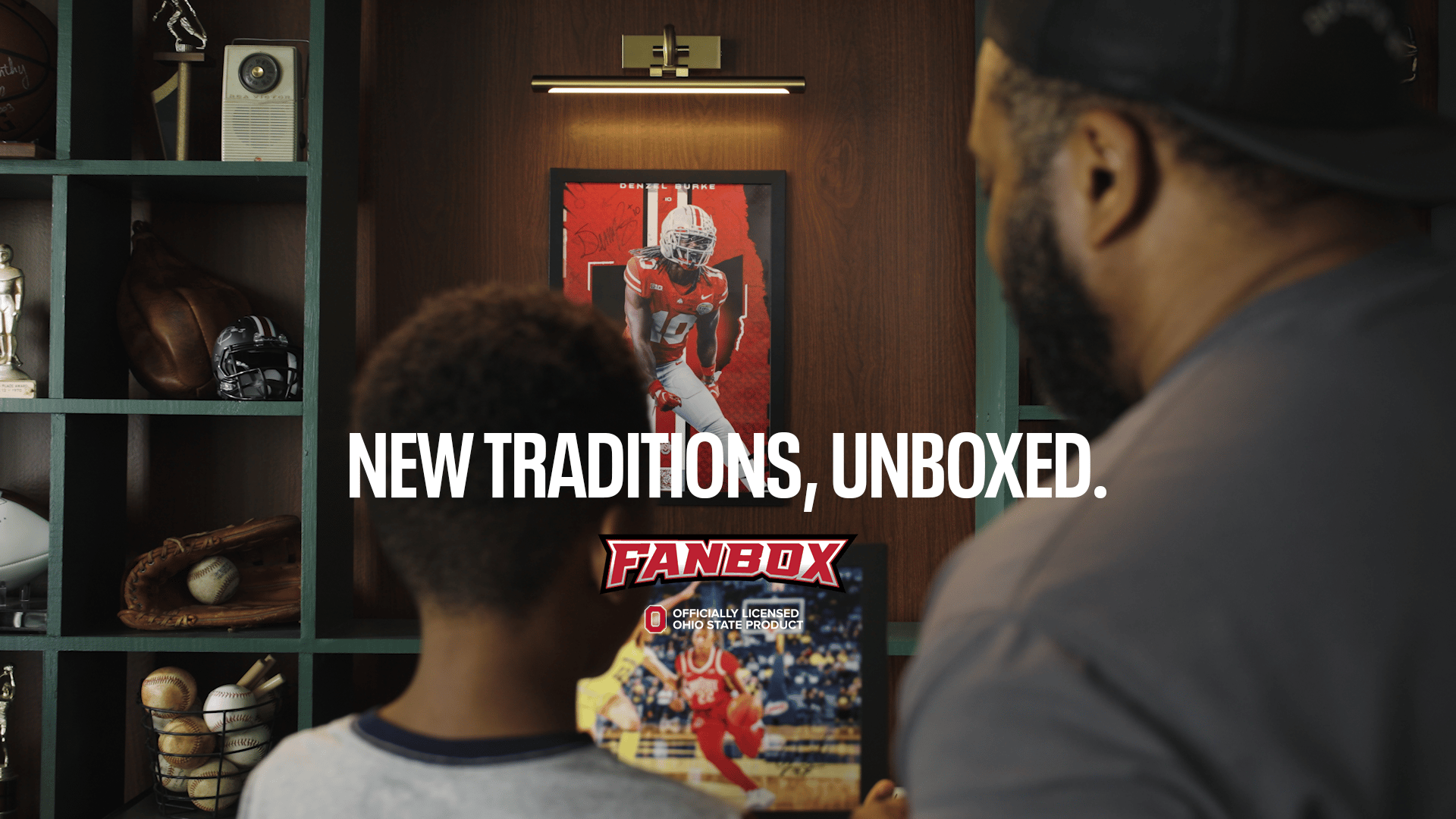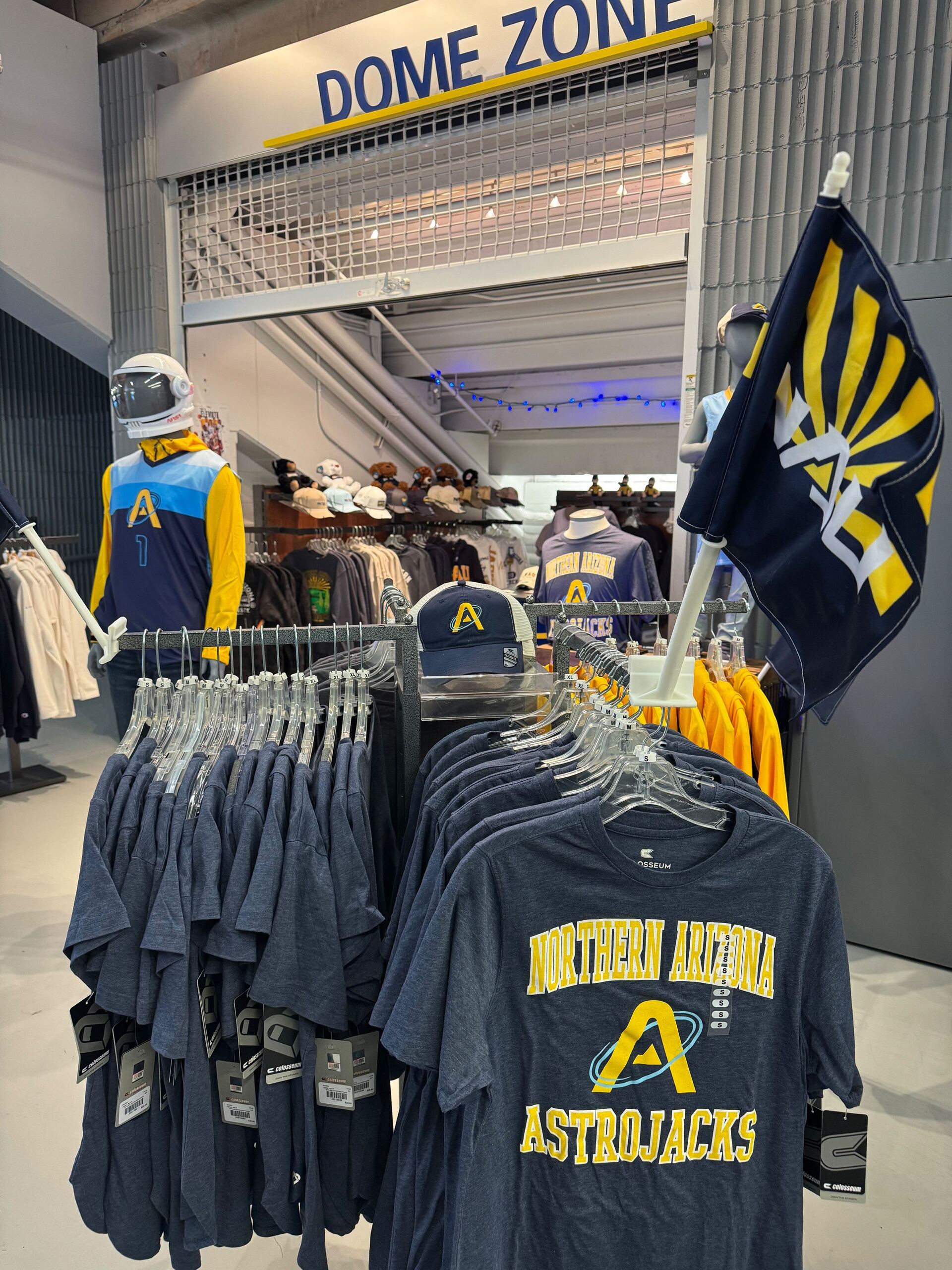Good morning, and thanks for spending part of your day with Extra Points.
How can Athletic Departments DELIVER a fully turnkey fan experience outside of game days with no upfront cost?
Bring in Fanbox to create unforgettable experiences that keep alumni and fans engaged beyond game day. From exclusive collectibles and content to limited edition merchandise and perks, Fanbox partners with athletic departments to build new revenue streams that support your athletes, programs, and alumni relations. See what Fanbox is doing with Ohio State.
Building fanhood isn’t something you just do at home games. It’s something you do 365 days a year. Fanbox can help built something special without any upfront cost.
Thanks to everybody who stopped by at the Raleigh Sports Podcast Festival! It was great to talk Moments In Being A Rad Dad with the folks at Hand In The Dirt, watching Necessary Roughness with Big Screen Sports, getting masters level coursework on Triangle Football Rivalry Lore with Ovies & Giglio, and being a gameshow participant with my buddies at Split Zone Duo. It was a great time!
While I was in the area, I also spoke to a class of journalism students at the UNC, and got a tour of the school’s athletic facilities. There’s a lot of exciting stuff to see at a program as historic and successful as UNC, (if somebody has better field hockey facilities out there, I certainly haven’t been there), but beyond tours of museums and trophies, I had plenty of conversations with professors and staffers about what’s on basically every senior athletic department staffer’s mind these days. Revenue generation.
Beyond finding new stuff to sell and license, generating new revenue also means finding ways to create new “premium experiences” across athletic facilities. Nobody can pour more concrete and slap another 25,000 seats into the football stadium. But with some creativity, they might be able to create a new activation for top donors.
I’m not picking on North Carolina when I talk about this. Everybody is trying to find more money. It doesn’t matter if you’re North Carolina or Northwestern or North Alabama…it’s arguably never been more important to find ways to discover new revenue streams than it is right now.
The Athletic recently shared some thoughtful reporting putting those revenue generation concerns in context. Over the last 20 years, revenues across college sports have exploded. Major programs like UNC, Wisconsin, Ohio State and LSU all reported athletic department revenues under $100 million in 2005. Now, those programs are close to $200 million, if not comfortably beyond.
Even FCS schools like Montana are reporting about twice as much revenue as they did in 2005. That’s still growth comfortably ahead of inflation.
Of course, that extra money wasn’t being socked away in a rainy-day fund or sent to central campus to pay for library renovations. College sports spending exploded just as much over that time period. Via the Athletic story:
Among the core financial expenditures every athletic department must find a way to cover, nothing rose quite like coaching salaries. In fiscal year 2005, the 16 schools paid around $111 million to their coaches — every staff position in every sport. By 2023, the three Big Ten schools in this sample totaled $114.5 million on their own. Collectively, the 16 schools spent $411.4 million on coaching salaries in fiscal 2023, a 370.4 percent increase from 2005.
“When you think about escalation of salary, it hasn’t just been in the head coaching position,” said Baylor athletic director Mack Rhoades, who previously led departments at Missouri, Houston and Akron. “I mean, we just paid a defensive coordinator $3 million in our industry. So there’s been escalation at the assistant coaching level, primarily in football and men’s basketball.”
That’s not just a Baylor, or a Big 12, problem. As the Knight Commission showed back in 2023, coaching salary spending exploded at the P5 level from 2012-2023,

via the Knight Commission
And it isn’t just with head and assistant football coaches (and their expensive buyouts). Salaries have also increased in college basketball, baseball, strength coaches, and now, of course, with GMs.
But major athletic spending doesn’t just come from salaries
The common argument is that spending on coaching salaries exploded because schools had to spend their newfound largess from broadcasts and MMR somewhere, and they couldn’t directly spend it on the athletes…so it went to the coaches. That is true, but schools also threw money around at other stuff.
Like the financing for construction projects. At my beloved alma mater, Ohio State, the school reported spending a whopping $54 Million on coaching salaries, benefits, and bonuses (more than double, FWIW, what the school spent on athletic scholarships). But it also reported spending more than $33 million on athletic facility debt service and leases.
Arizona reported spending roughly the same amount on athletic facility debt ($25 million) as they did on coaching salaries OR support staff salaries. Over a dozen other P5 schools reported spending more than $10 million.
And this is a problem. One could, theoretically, decide to lay off support staffers (who typically are not under multiyear contracts, if they’re under contract at all), in order to free up money for athlete revenue sharing. It’s difficult to claw back money on high level coaching salaries, since those are multi-year deals, but over a five-year period or so, perhaps new contracts will reflect slightly more modest salary numbers.
But if a school borrowed a bunch of money to build stuff in 2016, you can’t unbuild those things to save money now. The mortgage still has to be paid…either by the university general budget, or the athletic department. Plenty of other department costs, like insurance, bowl expenses, team travel and student aid, can’t be easily scaled up or down in response to a sudden lean year or unexpected costs.
Costs are pretty much guaranteed to remain high, even if revenue growth slows down, at least in the immediate future.
And I think I understand the real reason why. And it isn’t athlete revenue sharing.
Take this quote, from Boise State athletic director Jeramiah Dickey, from the Athletic story:
“We don’t have unity across our industry,” said Boise State athletic director Jeramiah Dickey. “We have a lot of cooks in the kitchen, from presidents to ADs to commissioners, and everyone’s job is to do what’s in the best interest of the place they are at and the people they lead and serve. And I’m not sure anyone is looking out for the greater good of an industry and thinking more creatively how we can create a more sustainable model because what we are currently doing is not sustainable.”
I think JD is right, and I’ll go even further. Not only are there too many cooks involved, but nobody is really incentivized to do the right thing.
You know who understands that the current trajectory of athletic department spending is completely bonkers? Almost every current athletic director, and every retired athletic director. Maybe not everybody sitting in the proverbial Big Chair is a financial Master of the Universe, but all of them are smart enough to understand how a balance sheet works. They’ll gladly admit to me or anybody else that we’re going in a stupid direction.
But nobody gets promoted because of their financial restraint. Nobody gets a big award at NACDA for not spending a lot of money on new building or big-name coaches. Nobody gets a contract extension, even though their basketball team went 7-25, because their students all graduated.
If you want job security or growth in big-time college sports, you need to cut ribbons, bring in big checks, and hoist trophies. I’ve inspected hundreds of athletic director contracts over at the Extra Points Library. Just take a look at the typical contract incentives sections. Gerald Harrison, the new AD at Marshall (via Austin Peay) can earn up to $10,000 in bonuses if Thundering Herd athletes achieve certain GPA and APR bonuses. But he’ll earn $15,000 for a Sun Belt Title. His total bonus pool (which also includes potential bonuses for corporate fundraising, ticket revenue and other benchmarks) is $65,000. Nothing about spending. Arizona AD Desireé Reed-Francois can earn $40,000 in academic bonuses if the GPA for male (or female) athletes exceeds that of the general student body…and $50,000 if the football team makes any bowl game. You get the idea.
I mention this not to pick on Desireé or Gerald or anybody else. I could have picked dozens of other ADs…those two were just at the top of the ol’ Library pile. I almost never see bonuses tied to financial restraint. I see them for growing revenues and winning championships.
And if you don’t cut ribbons, if you don’t find ways to make the revenue line go up, and if your programs don’t win, you get fired.
So if you think that spending extra money could increase the chances of winning even a tiny bit, well, it is in your best interest to spend that money!
It would be easy for me to sit on my comfortable office chair, screenshot a bunch of budget reports or contracts, and lambast the industry for being shortsighted. But my mortgage doesn’t depend on my ability to make sure ol’ State U beats Tech next week. I don’t have the political pressures that administrators do. If I was sitting in the same chair, could I really say I’d do things that differently?
If I did, I suspect I’d be right back in my office chair pretty quickly.
I don’t have a good answer. I wish I did.
I’ve been thinking about this problem a lot, because honestly, I think it’s a higher education problem, not just a college sports problem. Athletic directors typically aren’t at one school for a decade anymore. Neither are university presidents, or regents, or anybody else that signs checks and balances books. Athletes and coaches certainly aren’t.
But debt does stick around that long. So do many university employees, and so do fans.
There are only so many mega rich fans to bail out free spending athletic departments. What happens when the TV checks stop increasing, or when there aren’t enough American Oligarchs to bail everybody out?
It’s not just a math problem. It’s a leadership and an incentive problem. And until that’s addressed, I’m not sure anybody can really get spending under control. You can replace any AD you want with any Wharton quant…if the incentives remain the same, who can afford to act differently?
All the Data You Need at a Fraction of the Cost
If you read this post and thought, dang, I’d sure like to look at a bunch of those athletic director contracts, well, you’re in luck. The Extra Points Library has over 8,000 PDFs across D-I and D-II, from AD contracts to major vendor agreements, coach contracts, itemized budgets, and more. It also allows you to sort and compare individual budget line items by sport…so if you want to know which basketball program earned the money from summer camps, or who spent the most on athletic debt, it’s all in the Library.
Check out Extra Points Library today





















